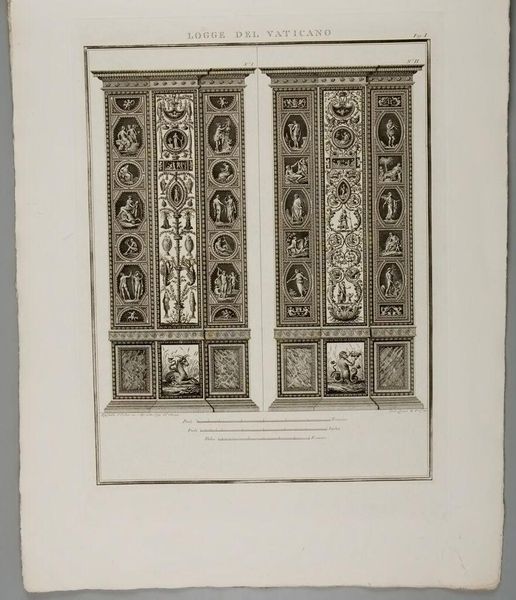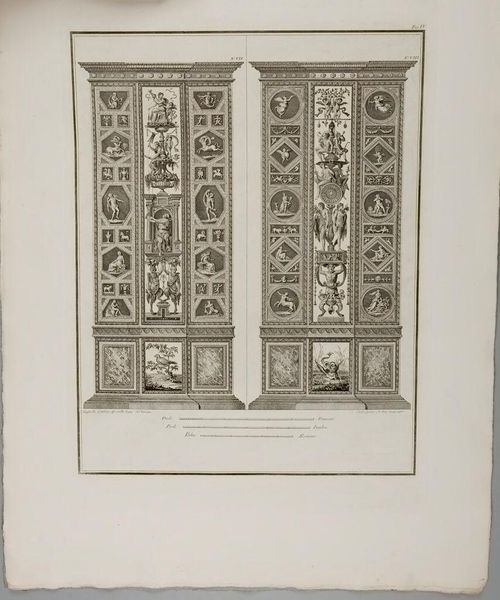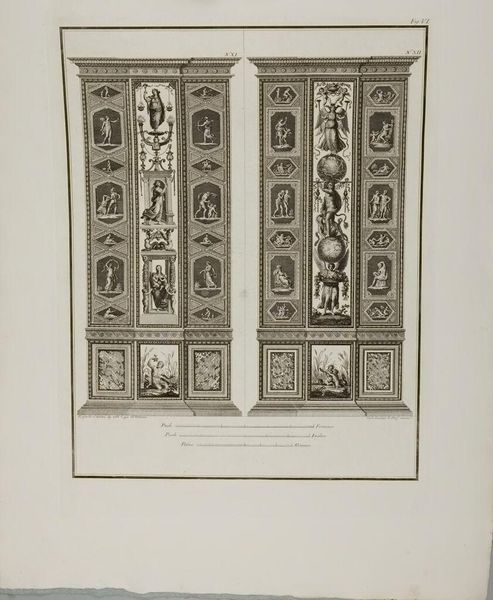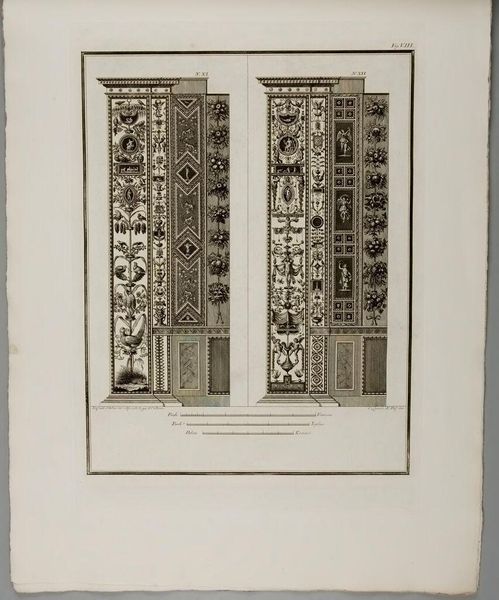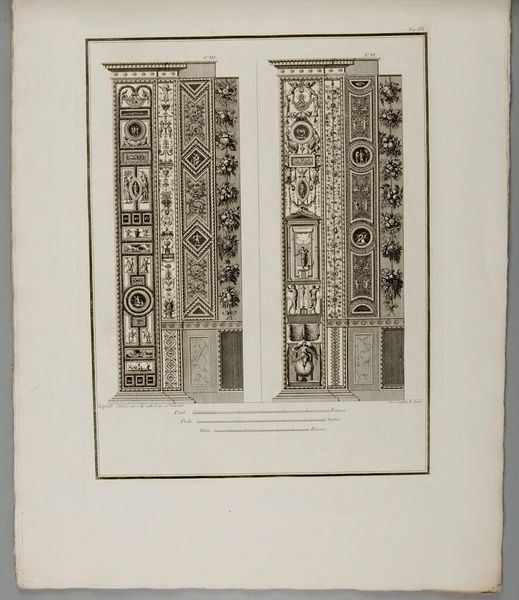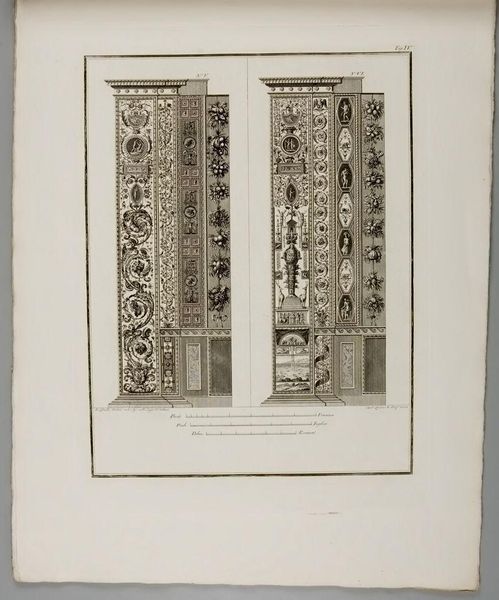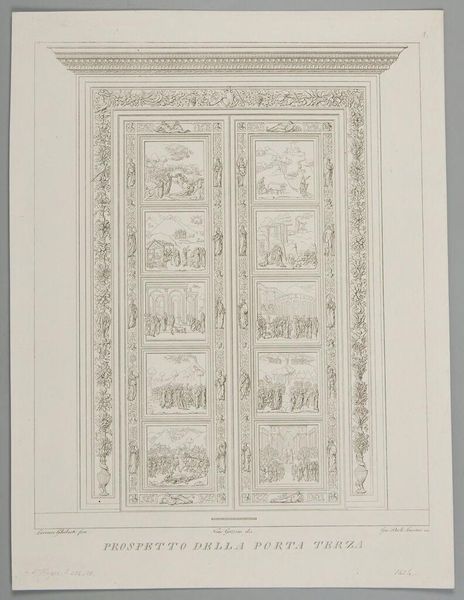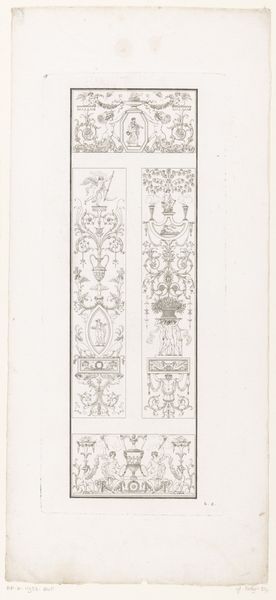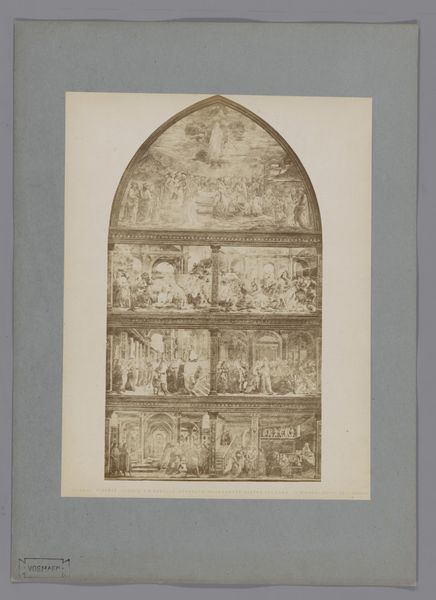
Copyright: CC0 1.0
Curator: This is Conte Carlo Lasinio’s "Fresco of the Vatican Loggia," a detailed study now held in the Harvard Art Museums. Editor: Wow, it's intricate! Gives off a very formal, almost architectural vibe, like peering at grand Renaissance cabinets. Curator: Indeed. Lasinio's work here is a fascinating exercise in documentation. What narratives do you think were being advanced through this imagery? Editor: All that ornate detail is meant to impress. The carefully staged scenes, the mythic figures, project authority, an almost suffocating control over meaning. Curator: I agree. This fresco underscores how art becomes a tool for power, with its classical allusions reinforcing a specific social hierarchy. Editor: Makes you wonder about the artisans themselves, right? Were they allowed to express themselves, or were they mere executors of a grand vision? Food for thought. Curator: Exactly. It pushes us to consider the layers of labor and intention intertwined in every artwork. Editor: It's more than just a pretty picture; it's a mirror reflecting power, skill, and perhaps a silent struggle for expression. Curator: Precisely, and that’s what makes art history perpetually relevant. Editor: Absolutely. You start with a fresco, and suddenly you're wrestling with the whole messy history of power dynamics!
Comments
No comments
Be the first to comment and join the conversation on the ultimate creative platform.
